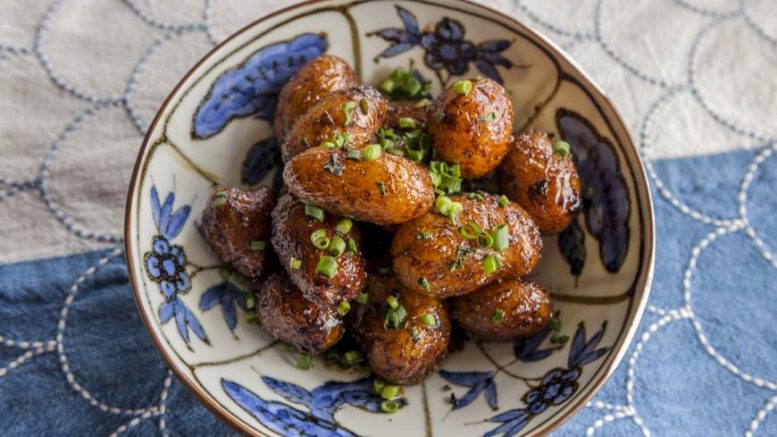The main clue as to when potatoes first entered Japan comes from its name in Japanese, jaga-imo.
When the tubers, which originate in the Americas, were first introduced to the port city of Nagasaki in 1598, they were brought in by Dutch traders from Djajakarta or Jacatra, as Jakarta, Indonesia, was known at the time. Therefore they were called jagatora–imo (imo being the word used for all potato-like vegetables). The term was eventually shortened to the jaga-imo we know today.
In the early years the potato was regarded as an ornamental plant, a curiosity for plant collectors rather than a food source. The earliest record of its cultivation as a food crop dates from 1706, when it was grown in Hokkaido. In the late 18th through early 19th century, potato production was encouraged as a way to combat famine when the rice crop was poor, especially in northern Japan, where growing rice was difficult. There is also evidence that the indigenous Ainu people of the north grew potatoes, too, possibly influenced by contact with the Russians.
Large-scale potato production did not start until the Meiji Era (1868-1912). The Meiji government made the development and settlement of Hokkaido a top priority, to discourage any encroachment by the Russians, among other reasons. Large numbers of military settlers called tondenhei as well as regular civilians were encouraged to settle in the north and cultivate the land. Since growing rice was difficult in the cold, dry climate, potatoes were proposed as a viable alternative.
One of the early proponents of potato growing was Baron Ryukichi Kawata, the senior executive of an agricultural company in Hakodate. In 1908, he arranged for several varieties of potato plants to be imported from the West to be trialed at a local farm.
As one variety proved to be particularly successful, Baron Kawata’s company encouraged farmers to plant their fields with it. From there, the potato gradually spread throughout Hokkaido. The variety that was trialed so successfully was named Danshaku, which means baron, in Baron Kawata’s honor. Danshaku potatoes still dominate the domestic potato market, accounting for around 60 percent of overall production. The second-most popular potato variety, May Queen, was introduced sometime in the 1910s. Although around 99 varieties of potato are grown in Japan today, these two make up the bulk of the yield. Danshaku potatoes have thick, rough skins and a floury texture, while May Queens have a firm, waxy texture. Hokkaido is still by far the leading producer of potatoes according to the Ministry of Agriculture, Forestry and Fisheries, with nearly 80 percent of all domestic production. That said, this year’s crop was damaged by the 2016 typhoon season, and potatoes (especially in chip form) are in shorter supply than usual.
Originally posted at The Japan Times


